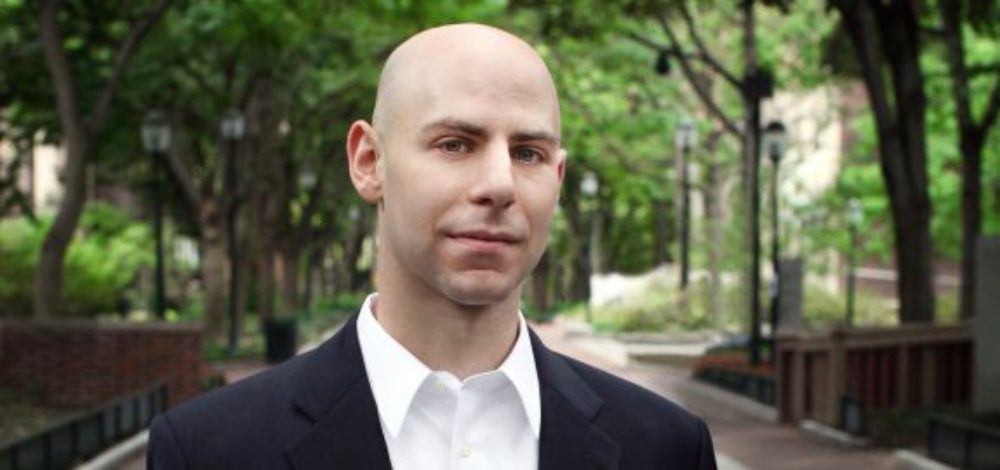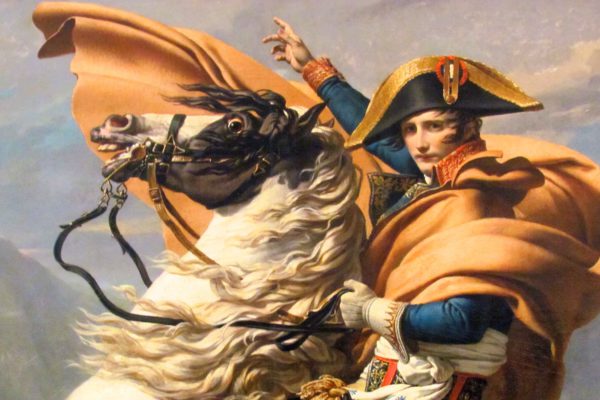
All significant achievement demands a journey beyond precedent. Adam Grant’s Originals is not so much a map for this journey as a curriculum for explorers, preparing the “reader as explorer” to handle the kinds of terrain they can expect to encounter.
The book is like a mosaic, largely made up of tiles constructed in a certain pattern. Each begins with a framing story — for example, the tale of “human polar bear” Lewis Pugh, already in possession of several records for cold-water swims, preparing for an attempt to become the first to survive a swim across the North Pole. After painting a vivid picture of the context (“after falling into that water, a British explorer had lost fingers due to frostbite in only three minutes; Pugh’s team estimated that his swim would require almost twenty”), Grant shows us research that bears on the protagonist’s dilemmas. Here Grant explores psychologist Julie Norem’s research on which contexts favor strategic optimism versus defensive pessimism as modes of managing the inner work associated with a difficult undertaking. He then shows us how the research applies in a range of settings, bringing us back to the protagonist to complete the arc of a lesson we have already begun to learn how to draw upon ourselves.
The book is valuable not only as a curriculum for would-be originals, but as a model for how to compile one’s own storehouse of empirically grounded practical wisdom over the course of a career. Perhaps the best tribute I can give is to sketch out some of what Grant’s book means to me as a thinker and as an entrepreneur, knowing that other readers will come away influenced in different but equally powerful ways.
Midway through Originals, Grant draws on the work of David Galenson to paint a picture of the contrast between conceptual innovators, who tend to peak in their twenties and early thirties, and experimental innovators, who are much more likely to become “old masters” doing important work much later in their lives. As someone whose greatest strength has seemed to be conceptual thinking, the question of how my own work might follow the pattern of the experimental innovators has great import. Vinod Khosla has said that “people under 35 are the people who make change happen. People over 45 basically die in terms of new ideas.” This commands attention from a forty-four-year-old reader whose early identity was shaped by applause for achieving various milestones at a younger age than most.
Grant explores Robert Frost as an exemplar of the experimental innovator (pg. 111):
Robert Frost wrote none of his most reproduced poems in his twenties and just 8 percent in his thirties, finally blossoming in his forties and again in his sixties. “Step by step,” poet Robert Lowell observed, Frost “tested his observations of places and people until his best poems had the… richness of great novels.” Like an explorer, Frost gathered material by venturing out into the world, listening carefully to real conversations. “I would never use a word or combination of words that I hadn’t heard used in running speech,” Frost acknowledged. Each poem was an experiment in mixing different elements: “No surprise for the writer, no surprise for the reader,” he was fond of saying. “When I begin a poem I don’t know—I don’t want a poem that I can tell was written toward a good ending…. You’ve got to be the happy discoverer of your ends.”
In my own case, taking Frost as a touchstone means harnessing conceptual advances to be in service of the “running speech” of building particular enterprises. It means letting my work in advancing a theory of management ripen in ways that should surprise me as the creator no less than it might eventually surprise others. There’s an art to taking this stance without losing boldness or a sense of urgency.
Whatever headline each reader takes away from Originals regarding the shape of his or her personal journey, each reader will undoubtedly come away with a string of gems to be put to various uses. For me, five chosen more or less at random include:
- The importance of understanding what the default is in any given circumstance, and what it takes for people to rethink that default. For instance, in the context of our work on youth employment, rethinking the default of what an entry-level job means to a young person could have great power in terms of extracting the value that even a supposedly “low-level” early job can provide
- The difference in success rates for entrepreneurs who wait to go “all-in.” Perhaps where Incandescent has experimented with Entrepreneurs in Residence in the past, we should experiment with “Entrepreneur in Situ” in the future – backing people to work in a more concerted way on new ventures without necessarily quitting their current job
- The Zeigarnick effect, in which we attend more to questions that we’ve left open, and the resultant value in “procrastinating” work toward closure on certain types of endeavors
- Colleague relationships where the colleague is alternately supportive and undermining create the most stress—more so than where the colleague is consistently undermining. This finding goes a long way toward understand the stress among co-founders, where the duality of support and undermining is a natural dynamic – and often extremely distracting during the early to middle stages of building a company
- The value of finding those who already thoughtfully oppose an idea versus appointing a devil’s advocate. As a strategist, I came away from reading this section of the book convinced that I put far too little effort into systematically surfacing diverse viewpoints below the top executive level in our clients
As with any good curriculum, I’m sure that the lessons that stand out as I look back on the book a year or two out will have evolved – that the lessons life underscores will be different from the lessons that glittered most on first encounter.
Grant’s work, like my own, comes from a stance of great optimism toward what people can, with sufficient will, imagination and attention to technique, achieve in their journeys beyond precedent. As I went back to Frost’s Collected Poems, reflecting on his example as a touchstone, I encountered a poem I hadn’t known before. Every idea is perhaps best accompanied by its shadow, and this poem of Frost’s is a worthy shadow to Grant’s Originals.
There are Roughly Zones
We sit indoors and talk of the cold outside.
And every gust that gathers strength and heaves
Is a threat to the house. But the house has long been tried.
We think of the tree. If it never again has leaves,
We’ll know, we say, that this was the night it died.
It is very far north, we admit, to have brought the peach.
What comes over a man, is it soul or mind—
That to no limits and bounds he can stay confined?
You would say his ambition was to extend the reach
Clear to the Arctic of every living kind.
Why is his nature forever so hard to teach
That though there is no fixed line between wrong and right,
There are roughly zones whose laws must be obeyed?
There is nothing much we can do for the tree tonight,
But we can’t help feeling more than a little betrayed
That the northwest wind should rise to such a height
Just when the cold went down so many below.
The tree has no leaves and may never have them again.
We must wait till some months hence in the spring to know.
But if it is destined never again to grow,
It can blame this limitless trait in the hearts of men.*
* From The Poetry of Robert Frost: The Collected Poems, Complete and Unabridged, Edited by Edward Connery Lathem, Henry Holt, 1979, p. 305



